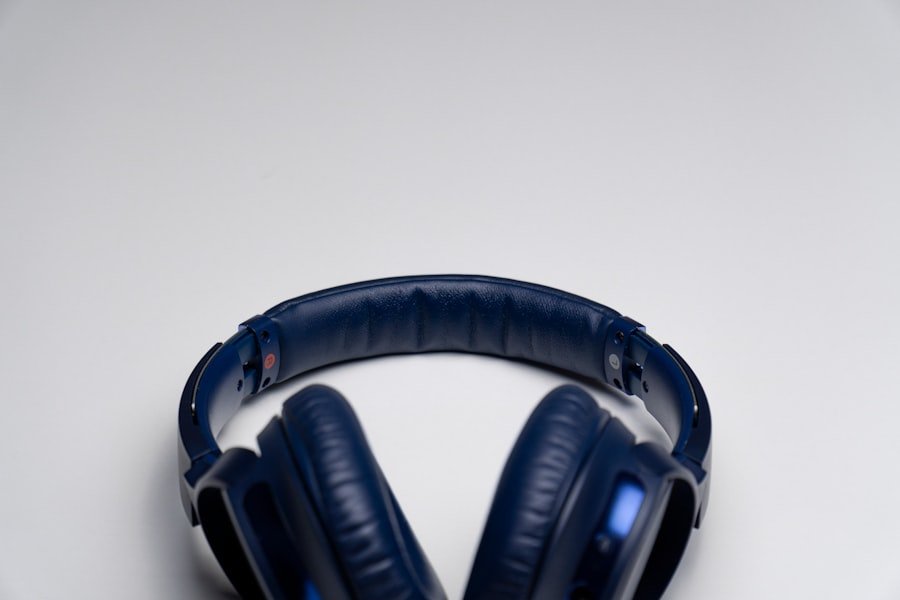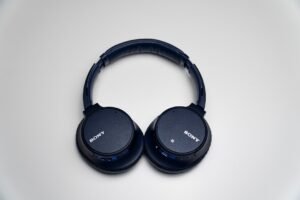The iPhone jack, a seemingly simple component of Apple’s iconic smartphone, has played a pivotal role in shaping the user experience and the broader landscape of mobile audio technology. Initially introduced with the first iPhone in 2007, the headphone jack became synonymous with convenience and accessibility, allowing users to connect their favorite headphones and enjoy music, podcasts, and calls without the need for additional adapters or converters. This small yet significant feature not only facilitated a seamless audio experience but also set the stage for a myriad of accessories that enhanced the functionality of the device.
As technology evolved, so too did the iPhone jack, leading to a series of changes that sparked debates among consumers and industry experts alike. The evolution of the iPhone jack reflects broader trends in technology and consumer preferences, illustrating how a single component can influence design decisions and market dynamics. From its inception as a standard 3.5mm jack to its controversial removal in later models, the journey of the iPhone jack encapsulates the tension between innovation and tradition.
As Apple sought to push the boundaries of design and functionality, the headphone jack became a focal point of discussion, raising questions about the future of audio connectivity in an increasingly wireless world. This article delves into the history and significance of the iPhone jack, exploring its original form, the implications of its removal, and the ongoing evolution of audio technology in relation to Apple’s flagship device.
When Apple launched the first iPhone in 2007, it came equipped with a 3.5mm headphone jack, a standard that had been widely adopted across various devices for years. This inclusion was not merely a nod to tradition; it was a strategic decision that catered to consumer expectations and preferences. The 3.5mm jack allowed users to connect their existing headphones without needing to invest in new accessories, thereby enhancing the device’s appeal.
The simplicity and universality of this connection type made it easy for users to enjoy high-quality audio without any hassle, reinforcing Apple’s commitment to user-friendly design. Moreover, the 3.5mm headphone jack served as a gateway for a plethora of accessories that enriched the iPhone experience. From high-fidelity headphones to portable speakers, the availability of compatible products created a vibrant ecosystem that thrived on the versatility of this connection.
Audio enthusiasts could easily find equipment that suited their needs, while casual users enjoyed the convenience of plugging in their favorite headphones. This symbiotic relationship between the iPhone and its audio accessories not only bolstered Apple’s market position but also contributed to the overall growth of the mobile audio industry.
Key Takeaways
- The iPhone Jack has undergone significant changes over the years, impacting the way users connect their headphones and other accessories to their devices.
- The original iPhone Jack was a 3.5mm headphone jack, which was a standard feature on most smartphones and audio devices at the time.
- The controversial shift came with the iPhone 7, which removed the headphone jack, sparking debates and discussions about the future of wired connectivity.
- The rise of wireless technology, including Bluetooth and AirPods, has become the new standard for audio connectivity with iPhones.
- The future of iPhone connectivity may involve USB-C, as seen in the iPhone SE, signaling a potential shift away from Lightning ports.
The Controversial Shift: iPhone 7 and the Removal of the Headphone Jack
In 2016, Apple made a bold move by removing the beloved 3.5mm headphone jack from the iPhone 7, a decision that sent shockwaves through the tech community and left many consumers reeling. The rationale behind this controversial shift was rooted in Apple’s desire to create a sleeker design with more internal space for advanced features such as improved battery life and enhanced water resistance. However, this decision was met with significant backlash from loyal customers who felt that Apple was prioritizing aesthetics over functionality.
The removal of the headphone jack not only disrupted established audio habits but also forced users to adapt to new ways of connecting their devices. The transition away from the headphone jack marked a turning point in Apple’s approach to audio connectivity. With this change, Apple introduced its own line of wireless headphones, AirPods, which quickly gained popularity and became emblematic of the company’s vision for a wireless future.
However, this shift also sparked a broader conversation about accessibility and consumer choice. Many users were left grappling with the need for adapters or new headphones, leading to frustration among those who preferred traditional wired connections. The removal of the headphone jack thus became a symbol of the tension between innovation and user convenience, highlighting how technological advancements can sometimes alienate even the most devoted customers.
The Rise of Wireless: Bluetooth and AirPods

As Apple phased out the headphone jack, it simultaneously championed wireless audio technology through Bluetooth connectivity and its innovative AirPods. The introduction of AirPods in late 2016 marked a significant milestone in Apple’s strategy to redefine how users interact with audio devices. These wireless earbuds not only offered convenience but also showcased advanced features such as seamless pairing with Apple devices, touch controls, and impressive sound quality.
The success of AirPods demonstrated that consumers were willing to embrace wireless technology, even if it meant parting ways with traditional wired connections. The rise of Bluetooth technology further facilitated this transition by providing a reliable means for users to connect their devices without cumbersome cables. As Bluetooth audio quality improved over time, many consumers found themselves drawn to the freedom and flexibility that wireless listening offered.
This shift was not without its challenges; issues such as battery life, connectivity drops, and sound latency remained concerns for some users. Nevertheless, the allure of untethered listening experiences ultimately outweighed these drawbacks for many consumers, leading to a significant cultural shift in how people approached audio consumption.
USB-C and the Future of iPhone Connectivity
| Metrics | USB-C | Lightning |
|---|---|---|
| Data Transfer Speed | Up to 10 Gbps | Up to 480 Mbps |
| Power Delivery | Up to 100W | Up to 12W |
| Reversibility | Reversible | Reversible |
| Compatibility | Universal | Proprietary |
| Adoption | Widely adopted | Apple exclusive |
As technology continues to evolve, discussions surrounding connectivity standards have gained momentum, particularly with the emergence of USB-C as a potential successor to both the 3.5mm headphone jack and Lightning port used by Apple devices. USB-C offers several advantages over its predecessors, including faster data transfer rates and universal compatibility across various devices, from smartphones to laptops. This versatility has led many industry experts to speculate that Apple may eventually adopt USB-C for its iPhones, aligning with broader trends in consumer electronics.
The potential transition to USB-C raises important questions about how it would impact existing accessories and user experiences. While some consumers may welcome this change for its modernity and efficiency, others may feel apprehensive about having to replace their current accessories or adapt to new charging standards. Furthermore, as more manufacturers adopt USB-C as a standard port, Apple’s decision could signal a shift towards greater interoperability within the tech ecosystem.
Ultimately, whether Apple embraces USB-C or continues with its proprietary Lightning port will shape not only its product lineup but also influence how users engage with audio technology moving forward.
In an unexpected twist in 2020, Apple reintroduced the 3.5mm headphone jack with its iPhone SE model, much to the delight of consumers who had longed for its return. This decision highlighted Apple’s recognition of diverse user preferences and its willingness to cater to those who still valued traditional wired connections. By incorporating the headphone jack into a budget-friendly model like the iPhone SE, Apple effectively acknowledged that while wireless technology is on the rise, there remains a significant segment of users who appreciate the simplicity and reliability offered by wired headphones.
The reintroduction of the headphone jack also sparked discussions about market segmentation within Apple’s product lineup. By offering both wired and wireless options across different models, Apple positioned itself as a brand that understands and accommodates varying consumer needs. This strategy not only appealed to loyal customers who had resisted upgrading due to the absence of a headphone jack but also reinforced Apple’s commitment to providing choices in an increasingly polarized market.
As consumers continue to navigate their preferences between wired and wireless audio solutions, Apple’s decision serves as a reminder that innovation does not always necessitate abandoning established technologies.
The Impact of the iPhone Jack Evolution on Accessories and Audio Technology
The evolution of the iPhone jack has had profound implications for both accessories and audio technology as a whole. With each iteration of Apple’s flagship device, manufacturers have had to adapt their products to align with changing connectivity standards. The removal of the headphone jack prompted an explosion of wireless audio accessories designed specifically for Bluetooth connectivity, leading to innovations in sound quality and user experience.
Companies began investing heavily in research and development to create headphones that could compete with traditional wired options while offering unique features such as noise cancellation and touch controls. Moreover, this shift has influenced how audio technology is perceived within consumer culture. As wireless solutions gained traction, there was an accompanying rise in marketing campaigns emphasizing convenience and lifestyle integration over technical specifications alone.
Brands began positioning their products not just as tools for listening but as essential components of modern living—reflecting an era where mobility and connectivity are paramount. Consequently, this evolution has reshaped consumer expectations regarding audio quality and accessibility while fostering an environment ripe for experimentation within accessory design.
The Constant Evolution of iPhone Connectivity

The journey of the iPhone jack—from its original 3.5mm form to its controversial removal and eventual reintroduction—illustrates a broader narrative about technological evolution and consumer adaptation. As Apple navigates this landscape, it continues to balance innovation with user preferences while responding to shifting market dynamics. The rise of wireless technology has undoubtedly transformed how we experience audio on our devices; however, it has also highlighted an enduring appreciation for traditional connections among many users.
As we look ahead to future iterations of the iPhone and beyond, it is clear that connectivity will remain at the forefront of technological discussions. Whether through USB-C adoption or further advancements in wireless audio technology, one thing is certain: Apple will continue to shape our understanding of what connectivity means in an ever-evolving digital landscape. Ultimately, this ongoing evolution serves as a reminder that while technology may change rapidly, our fundamental desire for seamless communication and high-quality audio experiences remains constant.
If you’re interested in the latest smartphone technologies and how they compare to the iPhone, particularly in terms of features like the headphone jack, you might find this article about the Blackview N6000 Rugged Smartphone intriguing. The Blackview N6000 is designed for durability and performance, catering especially to outdoor enthusiasts who need a robust device. To learn more about its specifications and how it stands out in the current smartphone market, you can read the full article here.
FAQs
What is an iPhone jack?
An iPhone jack refers to the 3.5mm headphone jack that was traditionally used to connect headphones and other audio devices to iPhones.
Does the latest iPhone have a headphone jack?
No, the latest iPhone models, starting from the iPhone 7, do not have a headphone jack. Apple has removed the headphone jack in favor of wireless audio and the Lightning port for wired audio connections.
How can I connect headphones to an iPhone without a headphone jack?
You can connect headphones to an iPhone without a headphone jack using Bluetooth wireless headphones or by using a Lightning to 3.5mm headphone jack adapter.
Why did Apple remove the headphone jack from the iPhone?
Apple removed the headphone jack from the iPhone to make the device thinner and to encourage the use of wireless audio technology.
Are there any disadvantages to not having a headphone jack on the iPhone?
Some users may find it inconvenient to use an adapter or Bluetooth headphones, and there may be compatibility issues with certain audio devices.









